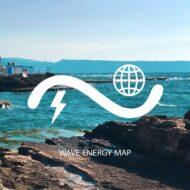–
–
Mauritania has 754 Km of coastline on the Atlantic ocean
Coastline (km) : 754
Coastal population percentage (%) : 55
The average wave power on the coast (kw/m) : 17.5
Wave energy theoretical potentials (Twh/year) : 115
Wave energy applicable potentials (Twh/year) : 6
Electricity consumption : 1.059 TWh (2016 est.)
wave energy index (%) : 566
Electricity access
electrification – total population: 32% (2019)
electrification – urban areas: 56% (2019)
electrification – rural areas: 4% (2019)
Electricity – from fossil fuels
65% of total installed capacity (2016 est.)
Electricity – from hydroelectric plants
16% of total installed capacity (2017 est.)
Electricity – from other renewable sources
20% of total installed capacity (2017 est.)
